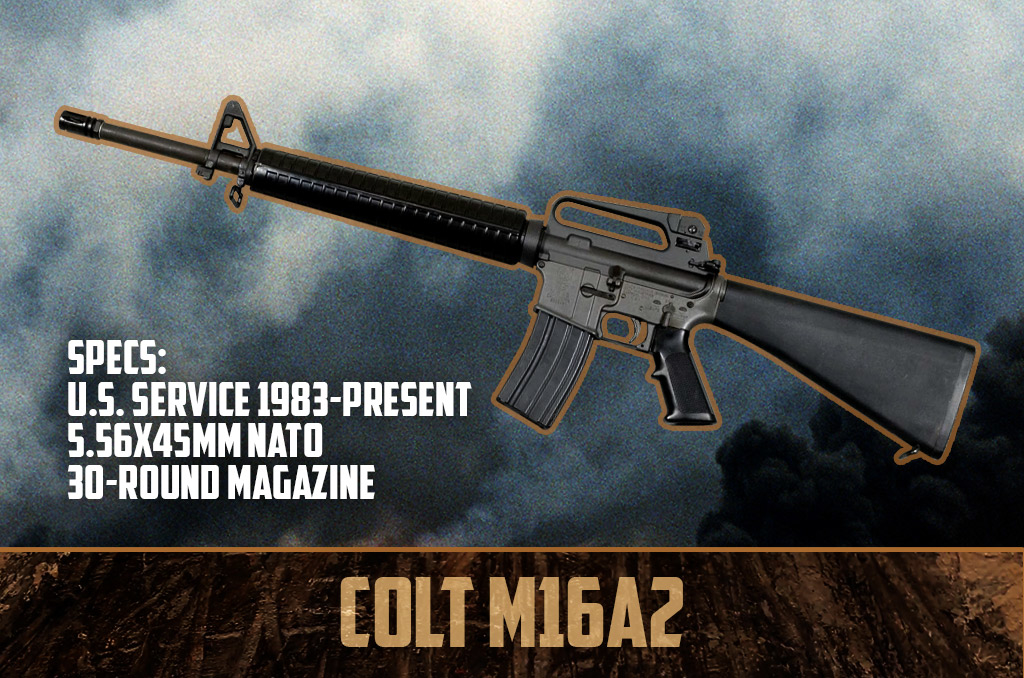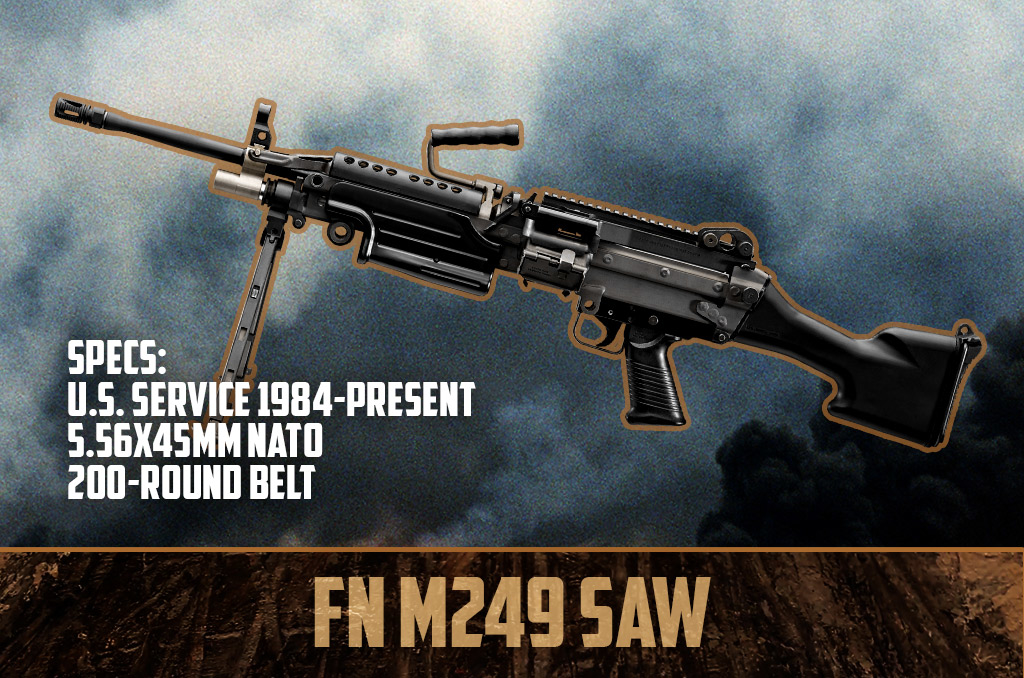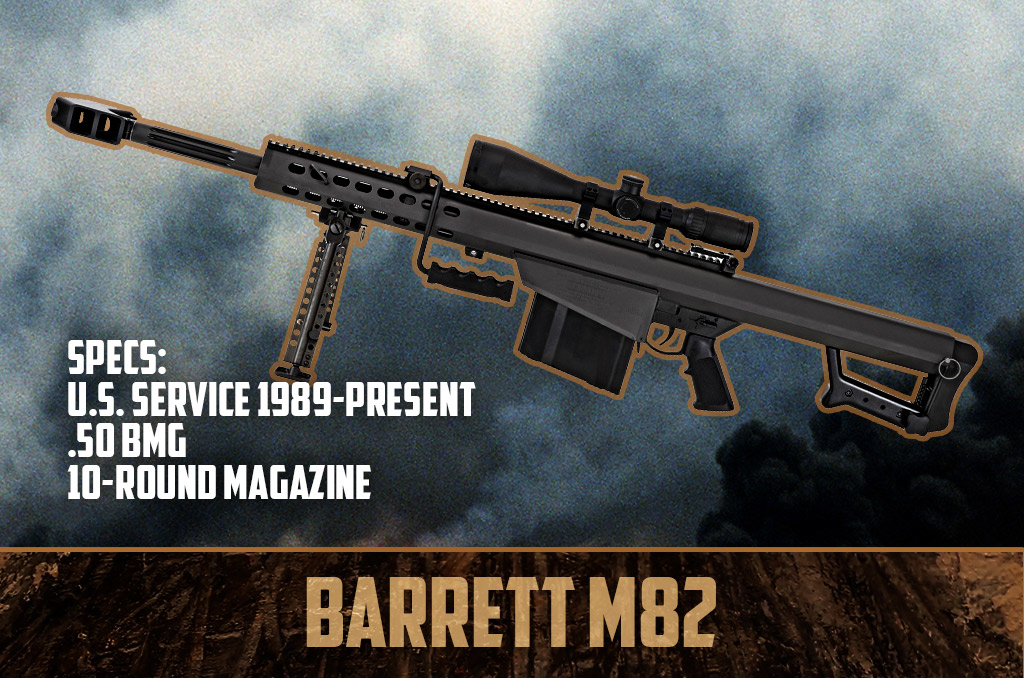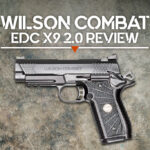
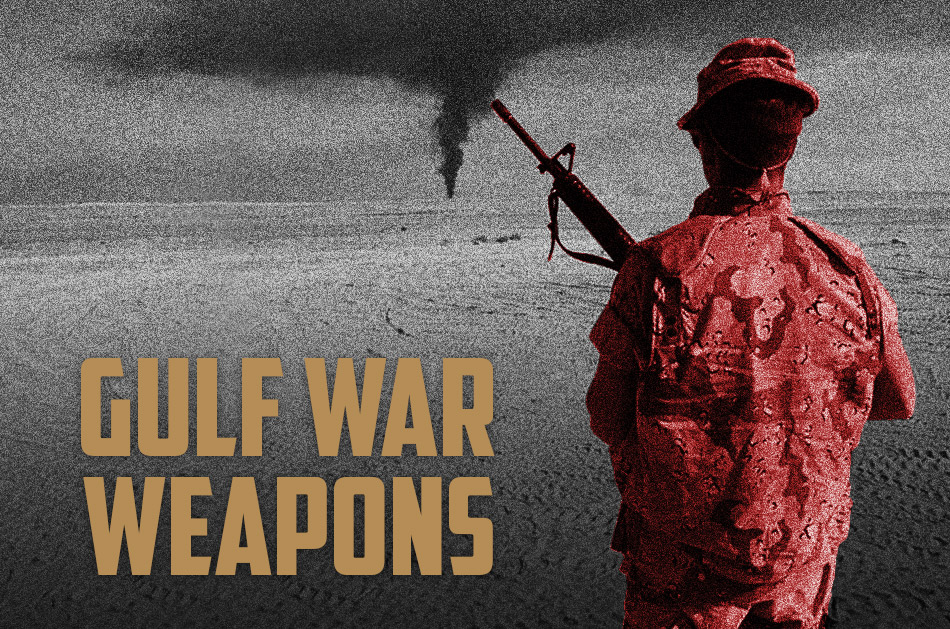
The Shield & The Storm: Gulf War Weapons
Good or bad, the Persian Gulf War of late 1990-early 1991 broke a long drought of full-scale armed conflict involving the U.S. Not since the end of the ground war in Vietnam had American forces assembled en masse to engage enemy forces. It was a return to the field of battle in a traditional land campaign. Thankfully, the end result was quite different than the debacle in Vietnam.
Coalition forces swept aggressively across the endless landscape of sand and burning oil. It was a ground war that was softened by unprecedented airstrikes and missile barrages. The joint operations were conducted in a blitzkrieg manner. It offered no solace for any foe who could not react as quickly as he was being countered.
However, this article is not about the tactics of the short-lived war. It is a glimpse of the weapons which won it in the hands of U.S. service members. Almost three decades later, it’s interesting to see that many of these Gulf War weapons still have their well-earned places in armories among various branches of the U.S. military.
Something Old and Some Things New
Actually, this is a misnomer. Many of the infantry weapons used by U.S. ground forces were new and had yet to be baptized by fire, so to speak.
The mainstay long arm of the U.S. military has had a common descendant since before Vietnam. Speaking, of course, of Eugene Stoner’s timeless AR-15 and it’s many variants over the past six decades. In the Persian Gulf War, it was the M16-A2 slung across so many soldiers and marines backs.
The other weapons covered here were all unproven in the inventory. The Beretta M9, stablemate to their highly popular Model 92, replaced the well-loved but aging M1911 just five years prior in 1985.
A light machine gun (LMG) concept was developed after Vietnam when the M60, although robust, was extremely heavy and had very limited ammunition supply. The FN M249 Squad Automatic Weapon (SAW) was put into service in 1984 to meet the requirement for an LMG and had yet to see wartime use.
Finally, the infamous Barrett M82 long-range sniper weapon, chambered in .50 BMG.
Beretta M9
The iconic Colt M1911 was the most prolific sidearm in the military, holding the contract as the standard issue sidearm for 75 years before being replaced by the Beretta M9.
The Beretta M9 is a good example of being in the right place at the right time. While the 9mm Luger was hardly new, it had been used mostly in pistols in single-stack applications; thin-gripped pistols which were light and easy to carry, but often had no higher magazine capacity than their big-bore peers like the M1911.
The advent of the “Wonder Nine” changed all of that. Lightweight pistols with fat grips with magazine capacities ranging from fifteen to seventeen, plus one in the chamber. The overall capacity of the standard three magazines carried doubled instantly. Officers transitioning from revolvers were then able to nearly triple their ammunition supply.
The M9 is lighter than the M1911 by about five ounces. However, it is still a fairly sizable piece by modern standards like the Glocks. The DA/SA mechanism did offer a pistol ready to use without having to maintain a cocked hammer.
Overall, as the M9 is at its twilight with imminent replacement looming by a striker-fired, polymer framed pistol, and it has been a decent pistol. Not great, but not terrible either. It has been in continuous service for over three decades, has operated in Mogadishu, Iraq, Afghanistan, and all over the rest of the world. But it is an outdated pistol and can hang its hat with pride on a job well done.
Colt M16A2
The third iteration of the M16 platform, the M16A2 was adopted into service in 1982. The A2 was a considerable design change from the XM16 or the A1, taking into consideration many lessons learned from those previous models from the cauldrons of combat.
The barrel of the A2 is the first noticeable difference, with the adoption of the “government barrel” profile. It entailed a heavier barrel forward of the gas block, over the “pencil” profile barrels. This was in order to prevent overheating which was so prevalent in earlier models, as the pencil barrels tend to warp under heavy sustained fire. The rifling twist was changed to 1:7, from the 1:12 of the A1, resulting in a much faster twist intended to optimize the M855 steel-core ammunition, a 62gr. Slug over the M193 FMJ “ball” 55gr cartridges used in Vietnam.
Other major design changes included changing the muzzle device to the “birdcage” we all know. Most notably, dropping the fully-automatic setting with a three-round burst in hopes of ammunition conservation.
M249 Squad Automatic Weapon (SAW)
One of the lessons learned from Vietnam was the lack of portable firepower available to one of the smallest infantry units, the squad. A pillar of land warfare, particularly urban warfare where maneuvering large units is all but impossible. Squads are units of a few men (less than ten) led by a non-commissioned officers (NCOs), squads operate with limited heavy weapons and support. Since squads patrol on foot by design, heavy weapons are not a viable option. The M60 is a fine example of a good weapon that was widely used but too bulky and impractical for squad operations.
Also, there was the issue of ammunition compatibility and capacity. The M60 carried the NATO standard 7.62X51mm, a potent cartridge but dissimilar to the M16. The concept was that the squad light machine gun should be chambered for the standard rifle caliber of 5.56X45mm, affording ammunition compatibility as well as a lighter weapon and more controllable weapon in sustained fire.
The M249 SAW can be belt-fed and also accept STANAG M16 magazines making it one of the most versatile Gulf War weapons. At 17lbs compared to the M60s 23lbs, it is much lighter and quite maneuverable at just over 40” in length.
Barrett M82
Now for the really fun stuff. The Barrett M82 is technically an “anti-material” sniper system, considering the size and power of the cartridge. The .50BMG is fully capable of incapacitating any thin-skinned vehicles (including large trucks). It was also proven ample for stopping lightly armored vehicles such as armored personnel carriers and armored cars.
Bullet weights vary from around 600gr. to 800gr., producing muzzle energy ranging from over 13,000ft. lbs. to nearly 15,000ft. lbs. These numbers, very roughly, are around five times the energy of a .30-06 Springfield. Cartridges are produced in the .50 BMG with a large variety of projectiles. They include incendiary, armor piercing, armor-piercing incendiary, tracers, and standard ball ammo, among others.
The M82 itself can use any of the .50 BMG cartridges in the inventory, allowing it to eliminate enemy personnel beyond 1,500 yards; to penetrate and ignite fuel and ammo dumps, and punch through light armor vehicles with ease. It operates using a short-recoil semi-automatic system to achieve relatively high and accurate rates of fire. It can stay engaged for a while using the standard 10-round magazine. The massive muzzle brake and its 29lb heft help manage the insane recoil produced. This does tend to make it a cumbersome weapon. However, its proven lethality against a broad array of targets at very long distances easily wins the dang day over the detractors.
The Gulf War Armory
Many of the Gulf War weapons were relative newcomers to the armory when the war kicked off. With the exception of the M16, many were unproven and untested in battle. The M249 quickly gained a reputation as a nasty buzz saw. A reputation which replayed ten-fold, maybe 100-fold, in Operation Enduring Freedom and Operation Iraqi Freedom.
The M16A2 was still the standard infantry battle rifle going into OEF/OIF until being usurped by its more compact first cousin, the battle-ready M4. However, some support units still have M16A2s in their possession because it remains a good and reliable weapon.
The Beretta M9 is on its way out after a full career. In the world of handguns, generational cycles tend to be much shorter than long arms. So the Beretta’s 30+ years are a testament to its durable design. However, the standard 92FS/M9 has become outdated by modern designs and technologies. Modern polymer frames are highly durable and very light, shaving off upwards of ten ounces from comparable alloy frames.
The Barrett M82 and its various iterations remain in service and are just as savage as ever. No other Gulf War weapons sniper rifle platform can do what it does, especially the psychological component. It has proven to be a real performer and will strike fear in the hearts of those on the opposite side of the battlefield for years to come.
Persian War Legacy
The Persian Gulf War started with massive airstrikes, raids from stealth bombers and cruise missiles pounding Iraq’s defenses. These coalition efforts helped to minimize the time spent with boots on the ground. They didn’t minimize the effectiveness of Operation Desert Sabre. U.S. ground forces put their armory to the test against the Iraqi Republican Guard, within 4 days, the resistance collapsed and President Bush declared a ceasefire effectively ending the war.



